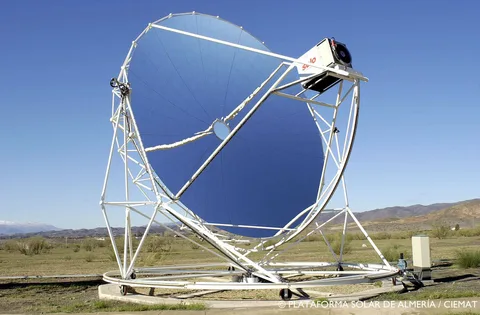| Introduction The Solar Concentrator Market is gaining global traction as industries and governments accelerate the transition toward clean and sustainable energy solutions. Solar concentrators use mirrors or lenses to focus sunlight onto a small area, producing high-intensity heat or electricity. This technology is critical for solar thermal power generation, industrial heating, and hybrid renewable systems. With rising global energy demand and the urgency to reduce carbon emissions, the market for solar concentrators is expected to expand steadily over the next decade, supported by innovations in materials and design efficiency. Understanding the Market Solar concentrators are essential components in Concentrated Solar Power (CSP) systems and photovoltaic concentrator setups. The market is broadly segmented by technology type—such as parabolic troughs, Fresnel reflectors, solar dishes, and solar power towers—and by applications including power generation, desalination, and industrial heating. Parabolic trough systems currently dominate the market due to their proven efficiency and scalability. However, advancements in solar tower and dish systems are driving new investments. The Middle East, North Africa, and parts of Asia-Pacific are emerging as major markets, owing to their abundant solar radiation and supportive renewable energy initiatives. Technological Innovations Technological advancements are shaping the solar concentrator landscape by enhancing efficiency, durability, and cost-effectiveness. Innovations in reflective materials, heat transfer fluids, and thermal energy storage have improved the performance of CSP plants. Hybrid systems that combine solar concentrators with energy storage or hydrogen production are gaining attention for their ability to deliver round-the-clock clean power. Additionally, developments in lightweight composite mirrors and advanced coatings are reducing maintenance needs and increasing operational lifespan. AI-driven solar tracking systems are also revolutionizing concentrator alignment, optimizing sunlight capture and minimizing energy losses. Market Growth and Future Outlook The Solar Concentrator Market is projected to witness strong growth, driven by global renewable energy expansion and climate policies promoting decarbonization. Countries like China, India, Saudi Arabia, and Spain are investing heavily in CSP and hybrid solar projects. Industrial sectors such as chemical processing, metallurgy, and desalination are increasingly adopting solar thermal systems to replace fossil fuels. Furthermore, integration with hydrogen generation technologies is opening new opportunities for clean fuel production. As manufacturing costs continue to decline and efficiency rises, the market is expected to achieve broader commercial viability by 2030. Challenges and Opportunities Despite its potential, the market faces several challenges including high initial installation costs, land requirements, and intermittent energy generation dependent on sunlight availability. Maintenance and alignment precision also remain critical to achieving consistent output. However, opportunities lie in hybrid systems that pair concentrators with energy storage or photovoltaic panels, improving reliability and efficiency. Government incentives, green financing, and carbon reduction targets are driving further adoption. Moreover, emerging applications in process heat for industries and solar-assisted district heating offer significant growth potential for the future. Conclusion The Solar Concentrator Market stands at the forefront of the global clean energy transition. By combining advanced optics, materials, and automation, solar concentrators are making renewable power generation more efficient and reliable. As nations push toward sustainable energy independence, these systems are set to play a vital role in achieving carbon neutrality and transforming industrial energy landscapes worldwide. |
